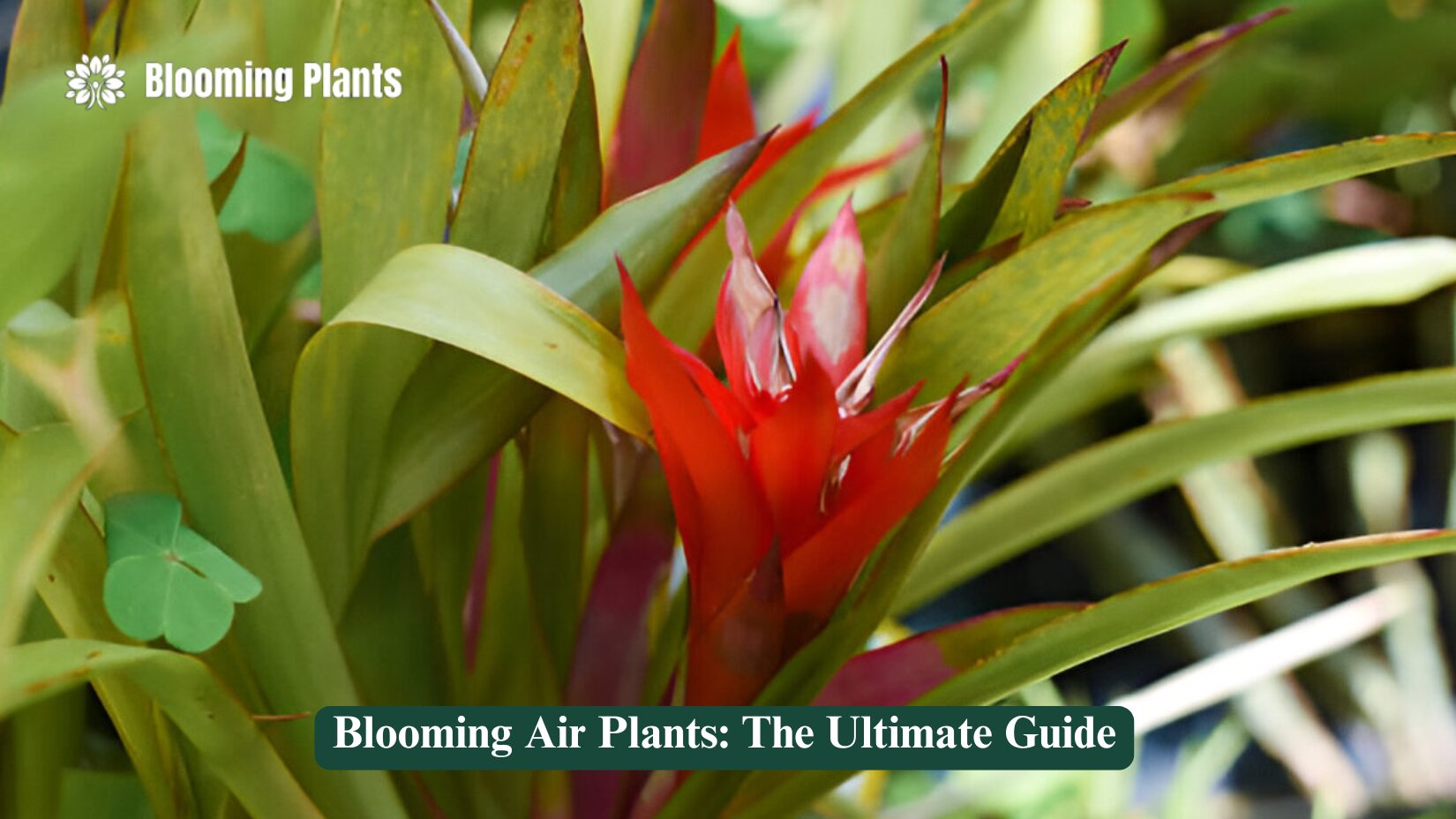Introduction
Air plants, scientifically known as Tillandsia, are unique plants that grow without soil. They absorb water and nutrients through their leaves, making them an excellent choice for creative displays in homes and offices. Blooming is the most rewarding stage of an air plant’s life cycle, as it produces vibrant flowers in a variety of colours.
This comprehensive guide will teach you everything you need to know about air plant blooms, from identifying the blooming stage to ensuring their long-term health.
Understanding Air Plants
What Are Air Plants?
Air plants belong to the bromeliad family and are native to forests, mountains, and deserts in Central and South America. Unlike traditional plants, air plants don’t require soil to grow.
How Do They Absorb Nutrients?
Air plants use specialized cells called trichomes on their leaves to absorb moisture and nutrients from the air. This adaptation allows them to thrive in various environments.
Types of Air Plants
There are over 600 species of air plants, each with unique characteristics. Some popular varieties include:
- Tillandsia ionantha
- Tillandsia xerographica
- Tillandsia caput-medusae
The Blooming Process
When Do Air Plants Bloom?
Air plants typically bloom once in their lifetime, usually between the ages of one and three years, depending on the species.
Signs of an Air Plant About to Bloom
You’ll notice changes like:
- Brightening leaf colors
- New growth at the center of the plant
- A developing flower bud
What Happens After Blooming?
After blooming, air plants enter a phase called “pup production,” where they produce offsets or pups, ensuring the continuation of their life cycle.
How to Encourage Air Plants to Bloom
Providing Proper Light
Bright, indirect light is essential. Place your air plants near windows with filtered sunlight or use grow lights if needed.
Maintaining Optimal Humidity
Air plants thrive in humidity levels between 50% and 70%. Regular misting or placing them near a humidifier can help.
Fertilizing Your Air Plants
Use bromeliad-friendly fertilizer once a month to provide essential nutrients.
Caring for Blooming Air Plants
Watering During Bloom
Reduce misting and avoid getting water on the flowers to prevent rot.
Protecting the Flowers
Keep blooming air plants away from direct sun and harsh conditions to prolong flower life.
Avoiding Overhandling
Limit handling blooming plants to avoid damaging the delicate flowers.
Common Problems and Solutions
Flower Rot
Occurs when flowers remain wet for too long. Always dry the plant thoroughly after watering.
Premature Flower Wilting
This can be caused by insufficient light or inconsistent watering. Adjust care routines accordingly.
Pests
Spider mites and aphids may attack air plants. Use a natural insecticidal soap to remove them.
Creative Display Ideas for Blooming Air Plants
Hanging Displays
Use glass orbs or macramé hangers to showcase blooming air plants.
Mounted on Driftwood
Attach air plants to driftwood for a natural, rustic look.
Terrarium Arrangements
Combine air plants with stones, moss, and other natural elements for an eye-catching terrarium.
Propagating Air Plants After Blooming
Harvesting Pups
Once the pups reach one-third the size of the parent plant, carefully separate them.
Growing New Plants
Place the pups in a bright, humid environment to encourage growth.
Maintaining Healthy Clusters
If you prefer, let the pups grow together to form a larger cluster.
Benefits of Growing Air Plants
Aesthetic Appeal
Their unique appearance and vibrant blooms add beauty to any space.
Low-Maintenance
Air plants are perfect for busy individuals or beginners.
Air Purification
They improve air quality by absorbing pollutants.
Air Plant Care Calendar
| Month | Activity |
| January | Mist weekly, monitor humidity |
| April | Fertilize for growth |
| July | Check for pests; increase misting |
| October | Reduce watering as needed |
Conclusion
Blooming air plants are a marvel of nature, offering beauty and intrigue to plant enthusiasts of all levels. By understanding their needs and providing proper care, you can enjoy their vibrant flowers and ensure they thrive for years to come.Embrace the charm of air plants and transform your space into a blooming paradise!
FAQs
- How long do air plant blooms last?
Most air plant flowers last from a few days to several weeks, depending on the species. - Can air plants bloom more than once?
No, air plants bloom only once in their lifetime. - Why isn’t my air plant blooming?
Factors like insufficient light or nutrients may delay blooming. - Should I cut off the flower after it fades?
Yes, trimming the flower encourages the plant to focus energy on pup production. - Do all air plants produce pups?
Yes, healthy air plants produce pups after blooming. - How do I revive a dying air plant?
Soak it in water for several hours and adjust care routines. - Can I use tap water for air plants?
Avoid tap water with chlorine; use rainwater or distilled water instead. - What is the best way to mount air plants?
Use non-toxic glue or wire to attach them to wood or other surfaces. - Are air plants toxic to pets?
No, air plants are non-toxic and safe for pets. - Where can I buy air plants?
Check local nurseries or online retailers for a variety of species.

